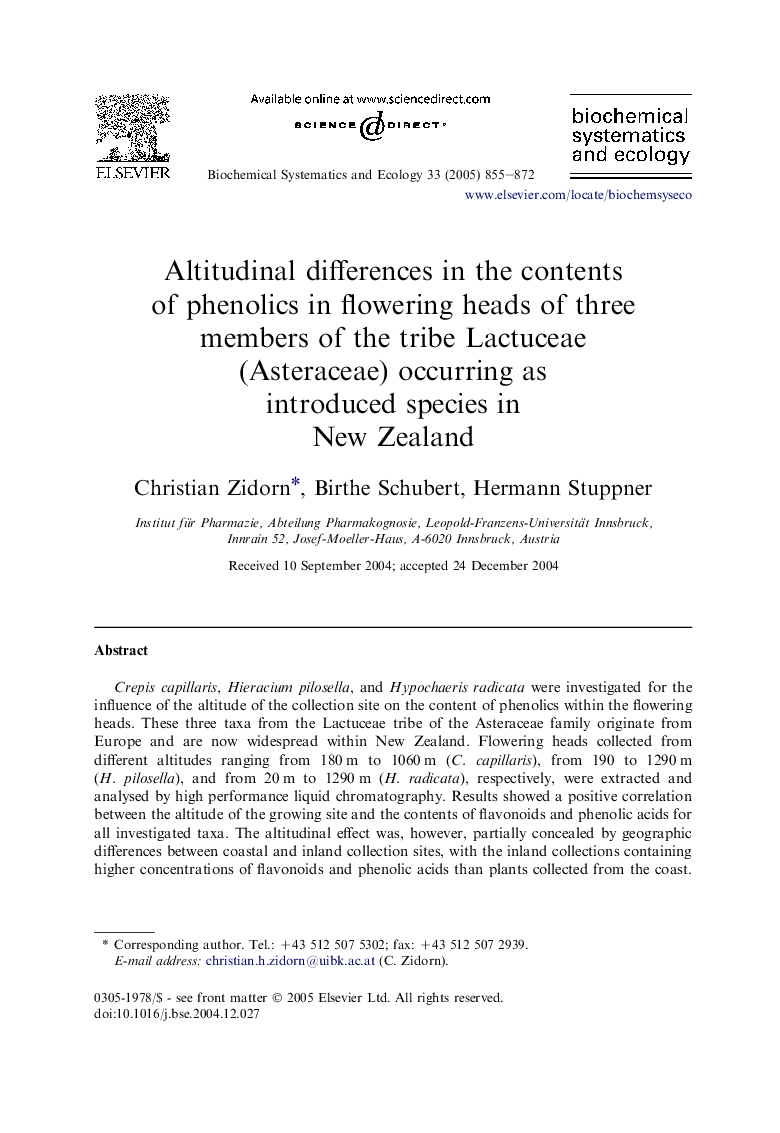| Article ID | Journal | Published Year | Pages | File Type |
|---|---|---|---|---|
| 10582174 | Biochemical Systematics and Ecology | 2005 | 18 Pages |
Abstract
Crepis capillaris, Hieracium pilosella, and Hypochaeris radicata were investigated for the influence of the altitude of the collection site on the content of phenolics within the flowering heads. These three taxa from the Lactuceae tribe of the Asteraceae family originate from Europe and are now widespread within New Zealand. Flowering heads collected from different altitudes ranging from 180Â m to 1060Â m (C. capillaris), from 190 to 1290Â m (H. pilosella), and from 20Â m to 1290Â m (H. radicata), respectively, were extracted and analysed by high performance liquid chromatography. Results showed a positive correlation between the altitude of the growing site and the contents of flavonoids and phenolic acids for all investigated taxa. The altitudinal effect was, however, partially concealed by geographic differences between coastal and inland collection sites, with the inland collections containing higher concentrations of flavonoids and phenolic acids than plants collected from the coast. The results are discussed in the light of a putative UV-B protective function of the quantified compounds and of the immigration histories of the three species at hand.
Keywords
Related Topics
Physical Sciences and Engineering
Chemistry
Organic Chemistry
Authors
Christian Zidorn, Birthe Schubert, Hermann Stuppner,
